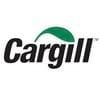Rethinking Vitamin Levels for Broilers: Moving Beyond Minimums for Performance and Quality
Published: November 17, 2025
This review, titled "Níveis vitamínicos para frangos de corte" (Vitamin levels for broilers), by Ananda Portella Félix, Alex Maiorka, and José Otávio Berti Sorbara, and published in Ciência Rural, March-April 2009, analyzes current concepts for evaluating broiler vitamin requirements and the levels suggested by both the scientific community and the industry. The core finding is that vitamin supplementation at levels higher than the minimum recommendations from bodies like the NRC (1994) and other research centers has consistently led to improved zootechnical performance in broilers.
The Vitamin Challenge: Modern Needs vs. Old Recommendations
Vitamins are essential micronutrients involved in numerous metabolic processes, crucial for optimal health and performance. However, the majority of levels recommended by the NRC (1994) were based on older studies conducted under controlled conditions, focusing on minimum levels needed to prevent deficiency signs, and did not evaluate optimal performance under the challenging field conditions faced today. Modern broiler strains exhibit a higher growth rate and greater production, necessitating higher nutritional requirements to express their genetic potential.
Industry Levels vs. NRC
Commercially employed vitamin levels are generally superior to those suggested by the NRC (1994).
Fat-soluble vitamin levels can exceed recommendations by up to 25 times (for Vitamin D, for example, 10 to 25 times).
Water-soluble vitamin levels can be up to five times higher than recommended.
This practice of using higher levels aims to compensate for variations in consumption, differences in the bioavailability of vitamins in the diet, anti-nutritional factors in feed, and stress.
New Parameters for Evaluation
The current determination of vitamin requirements extends beyond just zootechnical indices and deficiency signs. New, critical variables being assessed include:
Immune response (significant responses often occur when supplementation is at least 10 times the NRC level or two to three times the commercial level).
Welfare.
Carcass characteristics, such as vitamin enrichment for better appearance, longer shelf life, and improved nutritional value of the meat (e.g., higher deposition of Vitamin E and pantothenic acid with higher dietary levels).
Practical Application & Key Considerations
The use of higher vitamin levels is justified by demonstrating results such as greater productive performance and improved meat quality. For example:
Vitamin E supplementation (often 100−400UI/kg of diet) has been shown to improve meat quality, increasing stability and flavor.
Riboflavin (B 2) levels in corn and soybean meal diets are often below the NRC minimum, suggesting the field is likely deficient without supplementation.
Vitamin D3 at high levels (2,250−15,000UI/kg) has been shown to decrease the incidence of bone anomalies.
There is also a debate on removing vitamin supplementation in the finisher phase. While some lipo-soluble vitamins are stored , studies have shown that withdrawing the vitamin supplement in the last week or two before slaughter reduced weight gain, and some research found a negative impact on feed conversion and meat protein content.
Conclusion and Open Question
The current paradigm emphasizes that vitamin supplementation should aim for optimal levels to meet the demands of modern genetics and challenging field conditions, rather than just preventing deficiency. However, the scarcity of recent research focused on current strains and field conditions complicates the establishment of these optimal levels.
Given the strong evidence that current commercial levels (which are often several times higher than the NRC) are necessary to maximize performance, immune response, and meat quality, how should the industry fund and prioritize the new, complex research needed to define these optimal levels for contemporary high-yield genetics?
Related topics:
Authors:

Novus
Influencers who recommended :
Ali AfsarRecommend
Comment
Share

Would you like to discuss another topic? Create a new post to engage with experts in the community.














